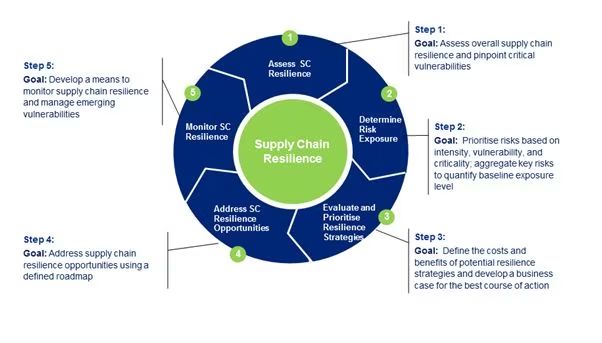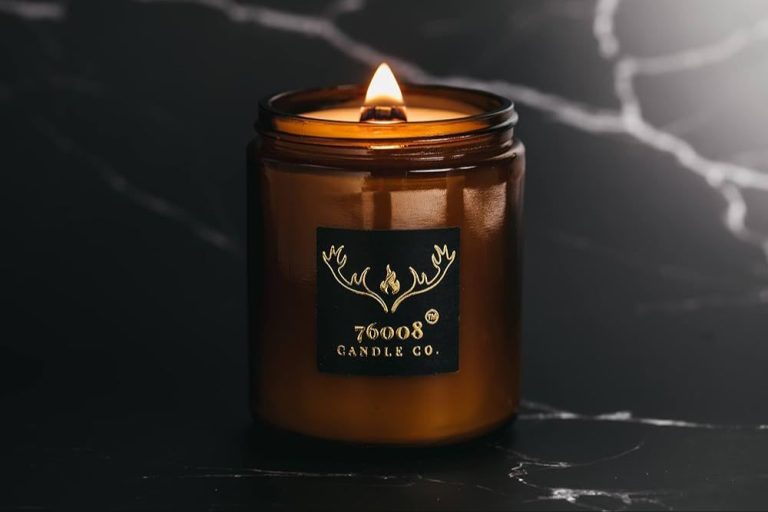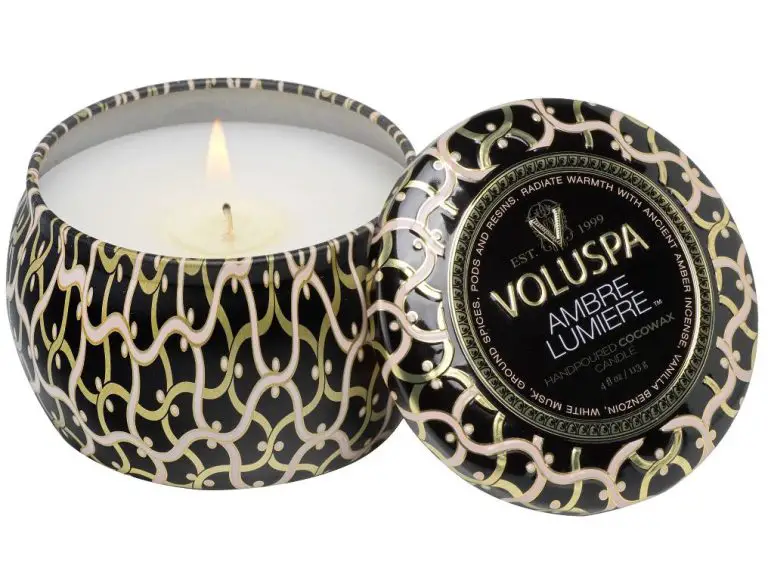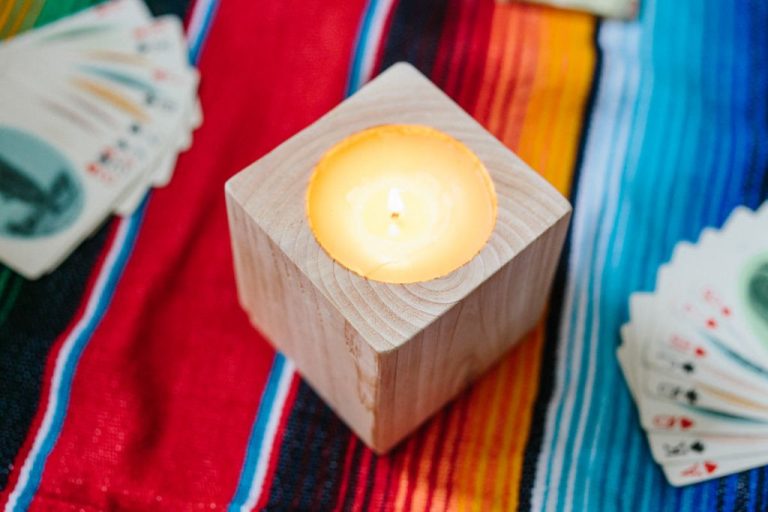What Kind Of Candles Float On Water?
Floating candles are a fascinating phenomenon that seems to defy gravity. However, a number of scientific principles explain how and why some candles are able to float on water while others sink. This article will provide an overview of the key factors that determine whether or not a candle will float, including density, wick material, shape, container size, water temperature, and surface tension. We’ll also discuss some troubleshooting tips and fun experiment ideas to try at home. By the end, you’ll have a better understanding of the physics and chemistry behind floating candles.
Candle Density
The density of the wax used in candle making plays an important role in determining whether or not a candle will float on water. Candle wax density is measured by the specific gravity, which is the ratio of the density of the wax to the density of water (source: https://armatagecandlecompany.com/blog/wax-per-candle/). The average density of candle wax is around 0.86. This means most candle wax is actually less dense than water, which has a density of 1.0. Waxes with lower densities than water will float, while denser waxes will sink.
Paraffin wax, a common candlemaking wax, has a density of around 0.9 which allows it to float on water. Soy wax, another popular choice, has a density between 0.85-0.87, making it light enough to float as well. Beeswax, which is denser at 0.96, may sink unless blended with a lighter wax. The optimal density for floating candles is around 0.7-0.8. Too high, and the candle will sink, but too low and the candle may not hold its shape well (source: https://armatagecandlecompany.com/blog/wax-per-candle/). Finding the right wax density is key for both floating ability and candle performance.
Wick Material
The material used for the candle wick plays an important role in determining whether a candle will float. Wicks are typically made from materials like cotton, paper, zinc, or tin 1. Wicks with natural fibers like cotton tend to be more buoyant than those made of metal.
Cotton wicks absorb wax as the candle burns, forming a “candle bloom” around the wick. This bloom helps make cotton wicks more buoyant. In contrast, metal wicks like zinc and tin do not absorb wax in the same way, so they tend to be denser and less buoyant.
For candles intended to float, a natural fiber wick like cotton is preferable. The cotton will provide buoyancy to keep the candle floating. Metal wicks, while common for candles in general, are less ideal for floating candles as they lack the buoyant properties of natural fibers.
Candle Shape
The shape of a candle can significantly affect its ability to float on water. This is because a candle’s shape impacts its density and surface area in contact with the water.
Tall, thin candles like tapers are more likely to float than short, wide candles like votives. The tall, slender shape gives tapers a lower overall density, allowing them to float more easily. The smaller surface area in contact with the water also reduces drag.
In contrast, short, wide candles have a higher density and more surface area in contact with the water. This makes it more difficult for them to float steadily. Their flat bottom and wide diameter create more drag and instability.
Pillar candles, jar candles, and other mid-sized candles may float if their density is low enough. Their moderate surface area and density can allow them to float on their sides at the water’s surface.
In general, longer taper candles with a high length-to-diameter ratio are the most likely to float upright. Short, squat candles tend to sink unless steps are taken to reduce their density.
Container Size
The size of the water container can significantly impact whether a candle floats or sinks. This is because of the interaction between the candle and the container walls.
In a very small container like a teacup, the candle has little room to move around and will likely hit the sides frequently. This friction against the container walls will inhibit the candle’s ability to float. Additionally, in a small space the candle takes up a large percentage of the container’s width, which reduces the buoyancy effect.
Conversely, a large container like a swimming pool gives the candle ample room to move freely without touching the sides. This lack of friction enables better floating. The candle also occupies a very small percentage of the container’s width, allowing buoyancy to keep it suspended atop the water.
For the best chance of getting a candle to float, choose a wide container like a large bowl or small bucket. Avoid very narrow vases and cups where the candle cannot move around. The container should be at least 2-3 times wider than the candle in order to reduce friction and improve floating.
Water Temperature
The temperature of the water affects a candle’s ability to float due to differences in density. Cold water is denser than warm water because the molecules are closer together at lower temperatures. This means a candle will have an easier time floating in warm water compared to cold water, since its density will be relatively closer to that of warmer water.
As the water temperature increases, the kinetic energy of the water molecules also increases, causing them to spread out and decrease the density. The greater difference in density between a candle and warm water makes floating easier. Experiments show that floating candles struggle to stay afloat in cold water but can easily float when placed in a warm bath.
According to the article on How to Make Floating Candles, the wax should be heated to 185°F (85°C) to create floating candles, showing that warmer wax with decreased density allows for floating.
Surface Tension
Surface tension plays a vital role in enabling candles to float on water. Water molecules are strongly attracted to each other due to hydrogen bonding. This creates an invisible “skin” on the surface that makes water resistant to penetration. According to Concepts of Physics, when an object is placed carefully on water, the surface tension allows it to float by creating an upward force that counteracts gravity’s downward force.
Surface tension depends on the temperature of the water. Hot water has lower surface tension than cold water, so candles will have more difficulty floating. The tension also depends on the cleanliness of the water – adding soap reduces surface tension. For candles to float best, the water should be cool and free of contaminants.
A candle’s wick and shape can be designed to take advantage of surface tension. A larger, flatter shape distributes weight over more surface area, allowing the tension to support it. An absorbent wick draws water up through capillary action, which further counteracts the candle’s weight.

Troubleshooting Floating Candle Issues
If you are having trouble getting your candles to float properly in water, there are a few techniques you can try to troubleshoot the issue:
- Trim the wick – Long wicks can cause candles to burn unevenly and tip to one side, preventing them from floating properly. Use scissors to trim wicks to 1⁄4 inch before lighting to help them burn evenly (Source).
- Check wax density – Low density waxes like soy tend to sink more easily. Opt for higher density waxes like paraffin to create candles that float more readily on water (Source).
- Use floating wicks – Specialty floating wicks are designed to keep wicks centered and upright to promote even burning. This can help stabilize floating candles (Source).
- Add weights – Small weights like pebbles or marbles can be placed at the bottom of container candles to lower the center of gravity and prevent tipping.
Experiment with different wick types, wax densities, container weights, and wick trimming methods until you find the right balance for floating candle success.
Experiment Ideas
There are some fun experiments you can try at home to see which candles float on water. Here are a few ideas:
Fill a clear glass or jar with water. Place different sized candles or candles of different widths on the surface and observe which ones float and which ones sink. Thinner candles are more likely to float. Reference: https://frugalfun4boys.com/candle-and-rising-water-science-experiment/
Take candles of the same width but different lengths and test their floating abilities. Shorter candles may be more likely to float than longer candles. Reference: https://frugalfun4boys.com/candle-and-rising-water-science-experiment/
Fill containers of various sizes with water and place the same candle in each to see if the container size affects its ability to float. Wide shallow dishes may allow more floating versus tall narrow vases.
Try floating candles in cold water versus hot water to observe any temperature related differences. Hot water may allow more floating due to decreased surface tension.
Test floating multiple candles in the same container to see if overcrowding causes some to sink. Space may be a factor for floating.
Conclusion
In summary, some candles are able to float on water due to their density being lower than that of water. Key factors that enable floating include:
- Low-density wax – Paraffin and beeswax are less dense than water.
- Thin wicks – Cotton and paper wicks allow candles to float, while thicker wicks may cause sinking.
- Wide shape – Large, wide candles have more surface area to float.
- Small containers – Using small glassware reduces overall density.
Through experimentation, we’ve discovered that floating candles involve intricate science. The candle’s density, wick material, shape and container interact to produce floating. With the right combination, beautiful floating candles can be created safely.
In closing, floating candles allow for unique decoration by producing elegant ambiance atop water. While making floating candles requires precision, the visual rewards can be serene. This article has covered key considerations in crafting floating candles successfully.






